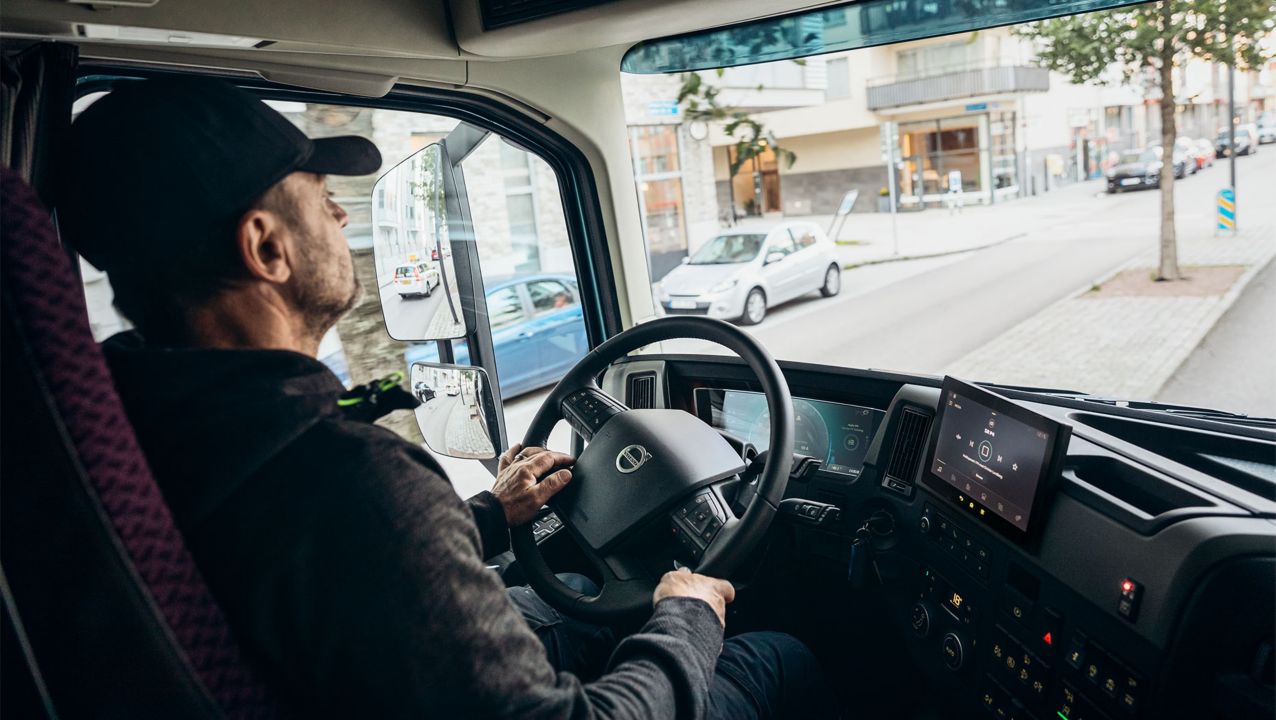About 1.2 million road users are killed worldwide every year. More than half of them are vulnerable road users (pedestrians, cyclists, moped and motorbike riders). When this type of accident involves a heavy truck, it is likely to have very serious consequences. Although the reasons for these accidents are complex and varied, a truck driver’s actions in traffic can help to save lives.
Almost a third* of fatalities in heavy truck accidents in the EU are pedestrians, cyclists, moped and motorbike riders. Traffic accidents involving vulnerable road users (VRUs) and heavy trucks are an emotive and challenging area to address.
“By understanding how and why these specific types of traffic accidents occur, traffic safety improvements can be identified and injuries reduced,” says Anna Theander, Leader of Volvo Trucks Accident Research Team.
Volvo safety research shows that to reduce the number of accidents, improvements in truck active safety systems, better road infrastructure and raised risk awareness among VRU’s are some of the most critical elements.
The human factor, applicable to all road users, is an important consideration. How a driver anticipates and reacts to situations involving VRUs, especially in busy urban areas, can have a large effect on the risk of this type of accident.
“To this day, the driver is still the number one safety system in the truck. A well-trained, attentive driver who understands the risks will make a difference,” says Anna Wrige Berling, Traffic and Product Safety Director, Volvo Trucks.
Here are some practical ways drivers can help to reduce the risk of this type of accident:
5 tips on how to reduce the risk of collisions with pedestrians, cyclists and moped riders:
1. Always assume VRUs are unaware of truck blind spots
Truck safety research involving VRUs has shown that pedestrians, cyclists and moped riders are simply not aware of the difficulties drivers face when trying to perceive everything around the truck in busy cities. Furthermore, most VRUs do not know how a truck with a longer trailer will behave when turning in a traffic environment. For these reasons, never assume VRUs will avoid risk areas and blind spots.
2. Be aware of common accident situations involving VRUs
It’s important to prepare for unpredictable and risky VRU behaviour. There are three situations that stand out and they are most common in urban areas:
- Trucks turning right in right-hand traffic and left in left-hand traffic and colliding with VRUs, especially cyclists.
- Collisions at the front of the truck when pedestrians cross the road.
- Collisions with pedestrians when reversing.
3. Anticipate the road ahead
Think about how you approach intersections and decide how to make your turn in the safest way possible. Stay alert and physically move to look and see better. Adapt your speed in busy urban areas – it is unlikely to impact on your delivery times.
4. Prepare for safer driving in cities
Allow time to adjust your seat and mirrors. Ensure that the mirrors and windows are clean, don’t obscure your view with monitors and personal items. Check all the truck’s safety systems, including cameras, are working and switched on before you start driving.
5. Remember - you are the number one safety system
Your truck’s safety systems and cameras are a valuable form of driver support. But a driver that actively assesses the road conditions and hazards is still the most important safety system in the truck.
What is being done to reduce the risk of accidents involving trucks and vulnerable road users?
Big changes are coming in the near future. The EU’s updated General Safety Regulations will require more mandatory active safety systems on all new trucks from July 2024. The systems will address truck blind spots at the front, side and rear, and warn the driver when a VRU enters a risk area. From January 2029, truck manufacturers will also be required to provide better direct vision for drivers.
In addition, the legislation for advanced emergency brake systems is being revised to also include automatic braking when pedestrians cross the road and enter the risk area. Broader initiatives are also progressing, such as road infrastructure improvements, industry collaborations and more in-depth traffic safety research that considers the complex causes of VRU accidents.
“Overall, the outlook is positive – and with the help of safety aware drivers, together we will reduce fatalities and serious injuries caused by this type of accident,” says Anna Wrige Berling, Traffic and Product Safety Director, Volvo Trucks.
* European Road Safety Observatory, Facts and Figures: Buses / coaches / heavy goods vehicles - 2020


